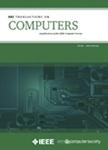版权所有:内蒙古大学图书馆 技术提供:维普资讯• 智图
内蒙古自治区呼和浩特市赛罕区大学西街235号 邮编: 010021

作者机构:Univ Ottawa Sch Informat Technol & Engn PARADISE Res Lab Ottawa ON K1N 6N5 Canada Univ Fed Minas Gerais Dept Comp Sci BR-30123970 Belo Horizonte MG Brazil Univ Fed Amazonas Dept Comp Sci BR-69077000 Manaus Amazonas Brazil FUCAPI Ctr Anal Res & Technol Innovat Fdn BR-69075351 Manaus Amazonas Brazil
出 版 物:《IEEE TRANSACTIONS ON COMPUTERS》 (IEEE Trans Comput)
年 卷 期:2009年第58卷第5期
页 面:677-691页
核心收录:
学科分类:0808[工学-电气工程] 08[工学] 0812[工学-计算机科学与技术(可授工学、理学学位)]
基 金:NSERC Canada Research Chairs Program Early Researcher Award Ontario Distinguished Researcher Award Brazilian Research Council (CAPES) Brazilian National Council for Scientific and Technological Development (CNPq) [55.4087/2006-5, 47.4194/2007-8, 57.5808/2008-0]
主 题:Network architecture and design algorithm/protocol design and analysis wireless sensor networks localization GPS free
摘 要:The establishment of a localization system is an important task in wireless sensor networks. Due to the geographical correlation between sensed data, location information is commonly used to name the gathered data and address nodes and regions in data dissemination protocols. In general, to estimate its location, a node needs the position information of at least three reference points (neighbors that know their positions). In this work, we propose a different scheme in which only two reference points are required in order to estimate a position. To choose between the two possible solutions of an estimate, we use the known direction of the recursion. This approach leads to a recursive localization system that works with low-density networks (increasing by 40 percent the number of nodes with estimates in some cases), reduces the position error by almost 30 percent, requires 37 percent less processor resources to estimate a position, uses fewer beacon nodes, and also indicates the node position error based on its distance to the recursion origin. No GPS-enabled node is required, since the recursion origin can be used as a relative coordinate system. The algorithm s evaluation is performed by comparing it with a similar localization system;also, experiments are made to evaluate the impact of both systems in geographic algorithms.